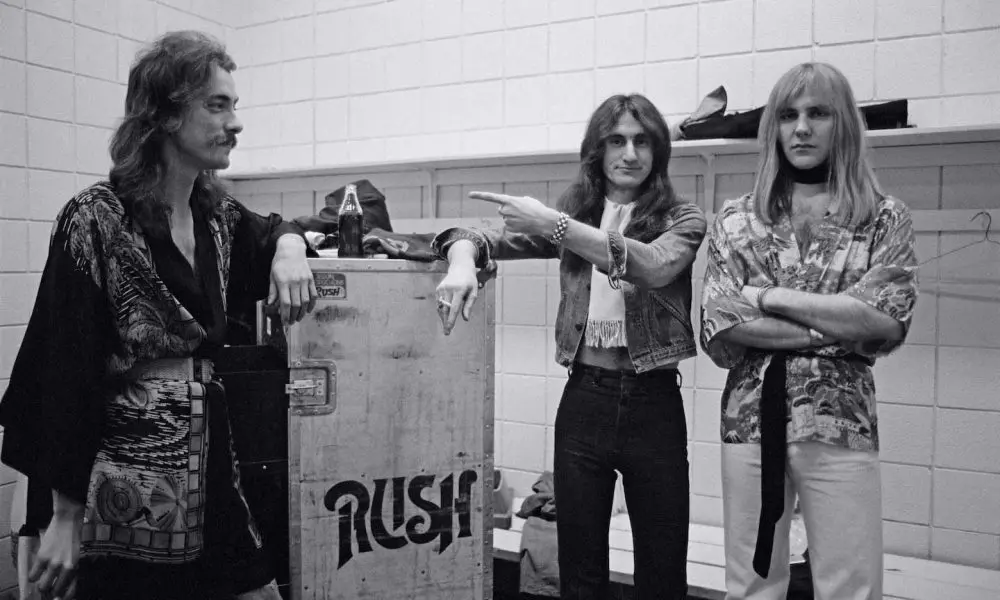‘Bastille Day’: The Story Behind Rush’s Rally For Revolution
Inspired by Geddy Lee’s revisiting ‘A Tale of Two Cities,’ ‘Bastille Day’ marches from a quiet beginning into a propulsive metal song.

Rush’s “Bastille” Day – which opens their third studio album, 1975’s Caress of Steel – begins with restraint, each musician previewing the forthcoming assault. Quickly, the song builds into a flurry of bass and Neil Peart’s rhythmic drumming, setting the stage for an impassioned, angry Geddy Lee vocal. As a record, Caress of Steel is notable for its relatively pared-back instrumental approach from the maximalist prog outfit. “Bastille Day,” therefore, is a fitting introduction to Rush’s more blunt and direct approach, a song that sets the tone for the rest of the record.
Rush loves to dive into subtext lyrically – whether the subject is history or Middle Earth – and “Bastille Day” is one of their most pointed allegories in the catalog. Inspired by Lee’s recent re-reading of A Tale of Two Cities, “Bastille Day” marches from a quiet beginning into a propulsive metal song, seemingly speeding up after every chorus, as if the song’s subject – a mob revolting on its rules – is storming the castle gates. It’s the prog metal equivalent of “In the Hall of the Mountain King,” a song that races to its climax as chaos escalates, and the band matches that energy every step of the way.
Peart, who wrote the lyrics after Lee briefed him on his obsession, designed “Bastille Day” to mimic a major event of the French Revolution, where peasants stormed the Bastille fortress in Paris. The song’s first line, ending with “let them eat cake,” spells out the inspiration clearly. While the quote is often attributed to Marie Antoinette, the target of the French peasants’ ire on Bastille Day, it actually predates her. However, the quote has come to represent the French royalty’s dismissive attitude toward the starving population, and Rush uses that mythology to create a dense and potent narrative that weaves the song together as it escalates.
The lyrics make other direct references, such as “the guillotine claim[ing] her bloody prize,” likely referring to the beheading of King Louis XVI and Antoinette, who were both convicted of treason. Inspired by the resentment of A Tale of Two Cities‘ main character, the Bastille-imprisoned Doctor Manette, Lee channels this rage in his vocals, telling the story from his perspective.
In the chronology of Rush, “Bastille Day” is an important reference point, musically. While the music of Rush would often venture into prog territory, with its irregular patterns and time signatures, “Bastille Day” is one of Rush’s more direct musical assaults, proof that the band could walk in different genres with ease. Often deployed as an opener to their live shows in the late 70s – it’s the opening track to their 1976 live album All the World’s a Stage – ”Bastille Day” represents the dynamic Rush at their most direct, propelled by a resonant narrative ripped from history.













Christopher A Ray
July 15, 2023 at 6:01 pm
My fave Rush album. Personally, I find it somewhat shocking that I have read as many negative revews by so called professionals over the years regarding this album.
Samuel Garza
June 20, 2024 at 2:22 am
It’s my second favorite song from the album, the first being “No One at the Bridge”. Their self-proclaimed “Down the Tubes” tour would’ve been a fascinating show to see live.